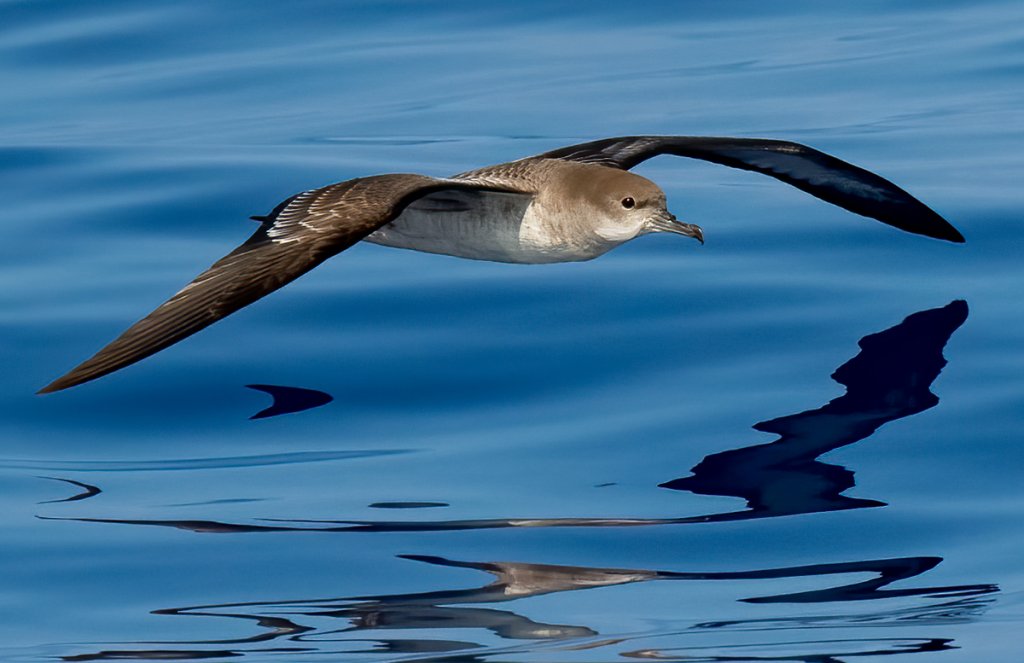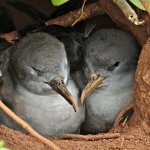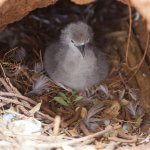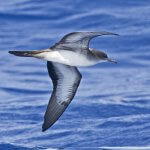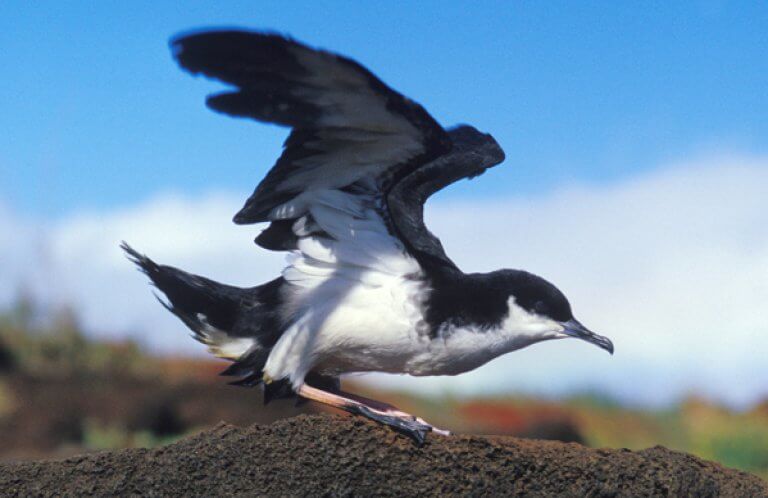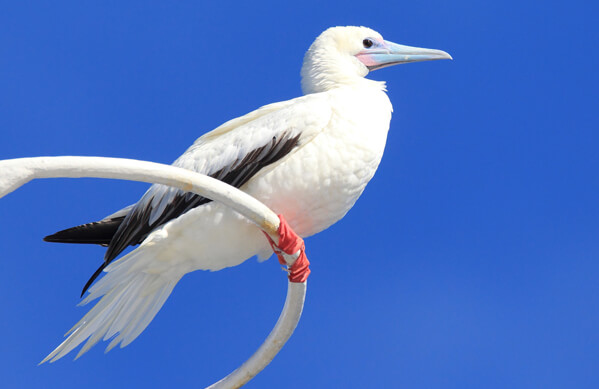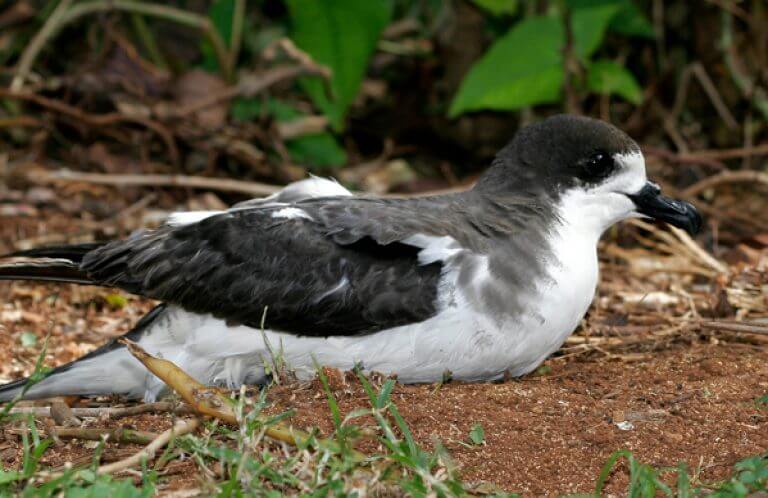About the Wedge-tailed Shearwater ('Ua'u Kani)
The agile Wedge-tailed Shearwater, or 'Ua'u Kani in native Hawaiian, cruises warm waters, watching for feeding opportunities at and near the water's surface. Its tapered tail and long, slender wings allow this large seabird to maneuver nimbly — flapping, gliding, swooping, then grappling small oceanic prey with its hooked bill.
Like the Critically Endangered Newell's and Townsend's Shearwaters, this bird only comes to land to nest on islands, which puts it in danger from threats including introduced predators.
Drawn to Turmoil
The Wedge-tailed Shearwater watches for panicking sea life at the water's surface, or for gatherings of other birds already drawn to such disturbances. Flushed by tuna, dolphinfish, or other predators looming below, small fish and squid pop to the surface, only to succumb to surface-feeding seabirds. Wedge-tailed and other shearwaters often assemble in large numbers at such events, along with many other species, including Red-footed Booby, Laysan Albatross, and Hawaiian Petrel. They also hang around pods of porpoises and dolphins, and fishing boats that dump chum (cut or ground bait) and offal (remains of fish after cleaning).
Songs and Sounds
This species does not usually vocalize while out on the ocean. At the nest burrow, however, chicks emit squeaky chirps, from a few days before until about 12 days after they hatch. Older chicks and adults moan, sounding like a cross between a small dog howling and a cow lowing: "ohOOOOOO." Pairs have been heard calling in duet within nest burrows.
Listen here:
Breeding and Feeding
Burrow Time
The Wedge-tailed Shearwater spends the entirety of its first four years at sea. Breeding-age birds pair up at nesting colonies on islands. Pairs that successfully bred the prior season usually reconnect. The female and male share the work of setting up a nest. In many areas, this means digging or refurbishing a burrow in soil or sand that is, on average, a foot and a half deep. In other places, Wedge-tailed Shearwaters nest in shaded rock crevices or ledges, or in depressions covered by vegetation including grasses or tree roots. The pair mates during the nest-building phase, then the birds return to sea for up to a month. This feeding period provides the nutritional boost the female needs to develop the large egg. When the pair returns, the female lays a single egg about the length of a large chicken egg.
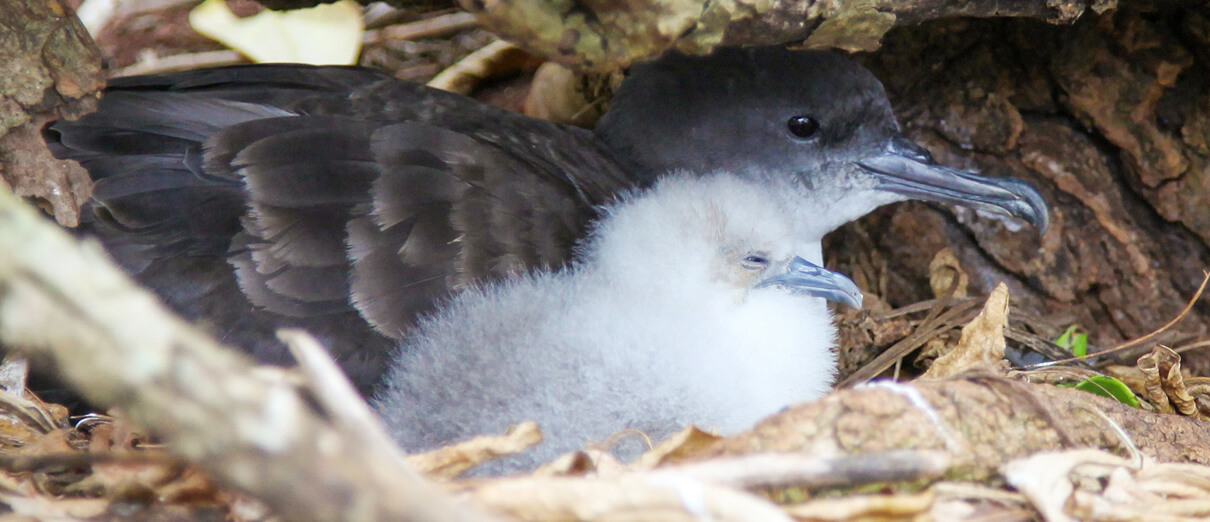
Shearwaters spend a long time at their nests. Female and male Wedge-tailed Shearwaters share incubation, which takes between seven and nine weeks. (By contrast, many songbirds incubate for around two weeks, and geese three to four.) Once hatched, the young bird grows quickly on food regurgitated by its parents. By three months old, the chick often weighs more than its parents, though it trims down to their weight before leaving the burrow. A growing young bird spends much time alone in the burrow and will defend the entrance, lunging at intruders. The nestling usually flies off just before it reaches four months old, headed for a four-year "tour" at sea during which time it does not return to land. They return to land only in their fourth to sixth year, once they have achieved adulthood.
The Wedge-tailed Shearwater's most frequent feeding behavior is "contact dipping," when a flying bird thrusts its head and neck into the water, grabbing live prey, including larval forms of goatfish, flying fish, mackerel scad, squirrelfish, and flying squid. Prey is quickly gulped down, and the shearwater keeps flying. This "on the wing" feeding technique keeps the bird from becoming a meal itself for a shark, tuna, or other predator, while allowing it to quickly resume its quest for more feeding opportunities. Wedge-tailed Shearwaters are also agile enough to nab flying fish in mid-air. They also sit in the water, gull-like, to pick food, including chum and offal, from the water's surface. This bird can also dive, on rare occasions as deep as 215 feet, although this behavior appears to be regular only in some regions.
Region and Range
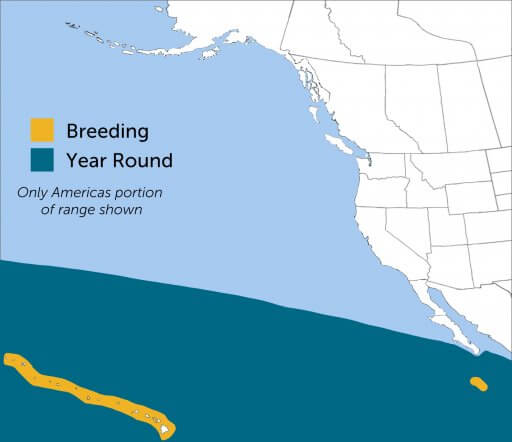
The Wedge-tailed Shearwater has a broad range across subtropical and tropical waters of both the Indian and Pacific Oceans. It nests from Madagascar east to islands off Mexico's Pacific coast. Coloration of underparts varies from white to dark, to a mix of light and dark; individuals across this spectrum often occur in the same area. The Wedge-tailed Shearwater is very rarely seen in waters off the coast of California.
Conservation
In Hawai‘i, the Wedge-tailed Shearwater remains one of the commonest seabirds, breeding on most islands. The state's population is thought to be stable, but many colonies face the challenges mentioned below. Across its vast range, the species' global population is thought to be in decline.
Oil spills pose a threat to these surface-feeding birds, as do plastics, which they often ingest. Also, dwindling wild tuna stocks, brought down by over-fishing, mean fewer feeding opportunities for shearwaters and other seabirds, while vacillations in currents, which can be exacerbated by climate change, can cause dramatic shifts in food availability.
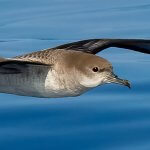
Help support ABC's conservation mission!
On islands the birds share with people, including in Hawai‘i, young birds departing colonies can be disoriented by lights and collide with powerlines, or wind up on paved surfaces including roads.
On many island nesting grounds, a range of introduced predators — including feral cats, rats, mongoose, and pigs — eat eggs, young, and adult birds. ABC and partners are working to install conservation fences that bar these introduced predators in Hawai‘i. They have already had success, for example, on the island of Moloka‘i, where 90 acres were restored and are being fenced — and where in 2020 the Wedge-tailed Shearwater returned to nest for the first time in recent memory.
Conservationists have also had success using social attraction to persuade this species to use artificial nest burrows, including on Kaua‘i.
Get Involved
Policies enacted by the U.S. Congress and federal agencies have a huge impact on seabirds. You can help shape these rules for the better by telling lawmakers to prioritize birds and bird-friendly measures. To get started, visit ABC's Action Center.
Plastics pose a deadly threat to seabirds around the world. You can help seabirds by reducing your daily use of plastics. To learn more and get started, visit our Plastics page.
American Bird Conservancy and partners are creating predator-free nest sites for vulnerable seabird species, reducing fishery impacts, and much more. This is a monumental undertaking, requiring the support of many, and you can help by making a gift today.





































